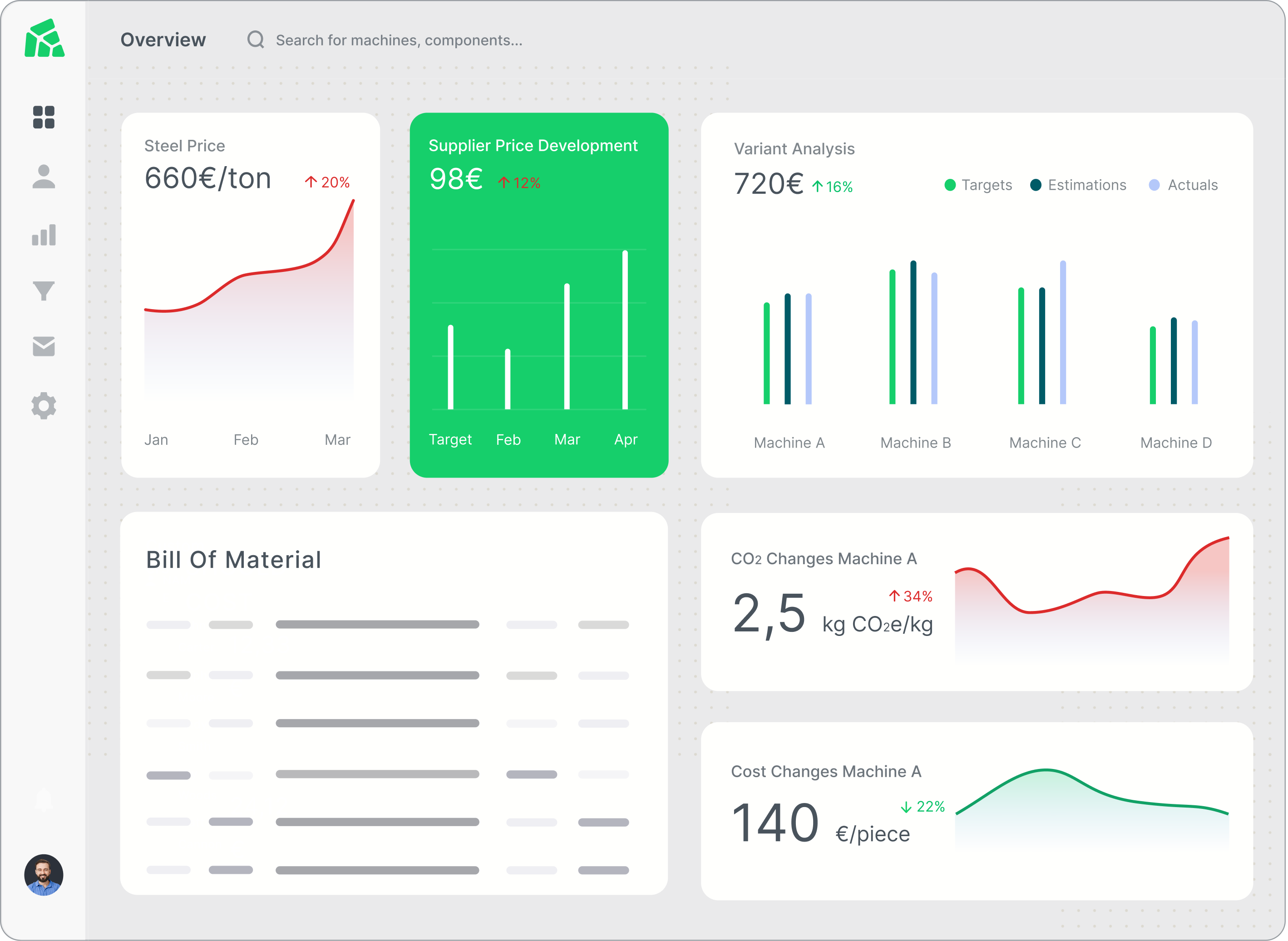News
June 26, 2025
What Is Product Lifecycle Costing – And Why It’s Critical for Cost Excellence
Discover what Product Lifecycle Costing (PLC) is, why it matters for cost excellence, and how to use it for smarter product development decisions.
Learn why you can't meet your targets when launching physical products & how static spreadsheets hinder your success

Unmet targets mean:
80% of product total cost and CO2 impact are set during the design & development phase2,3
High customer demands for customized products and shorter development times complicate targeted cost and sustainability management in product development, especially for SMEs. R&D involves multiple departments, from executives to engineers to product and procurement managers, who currently rely on static spreadsheets. This leads to information asymmetries, inefficient processes, and siloed teams - resulting in unmet targets, wrong decisions, and missed savings opportunities.

Moving away from error-prone spreadsheets towards digitized product cost- and carbon footprint management for hardware product development. With valuemize we have built a cloud-based software solution for industrial SMEs that promotes intuitive Bill of Material management to enable cost & sustainability transparency for cross-functional teams, leading to the optimization of product costs & carbon footprint. Increasing resource efficiency by automation, use of existing data & AI.
Product cost management in product development as no. 1 lever for highest profit growth4
Reach out to our experts via our contact form or schedule a meeting to see how digital product cost and carbon footprint management can enhance your product's success.
Sources:
1) McKinsey & Company
2) KAYSUN
